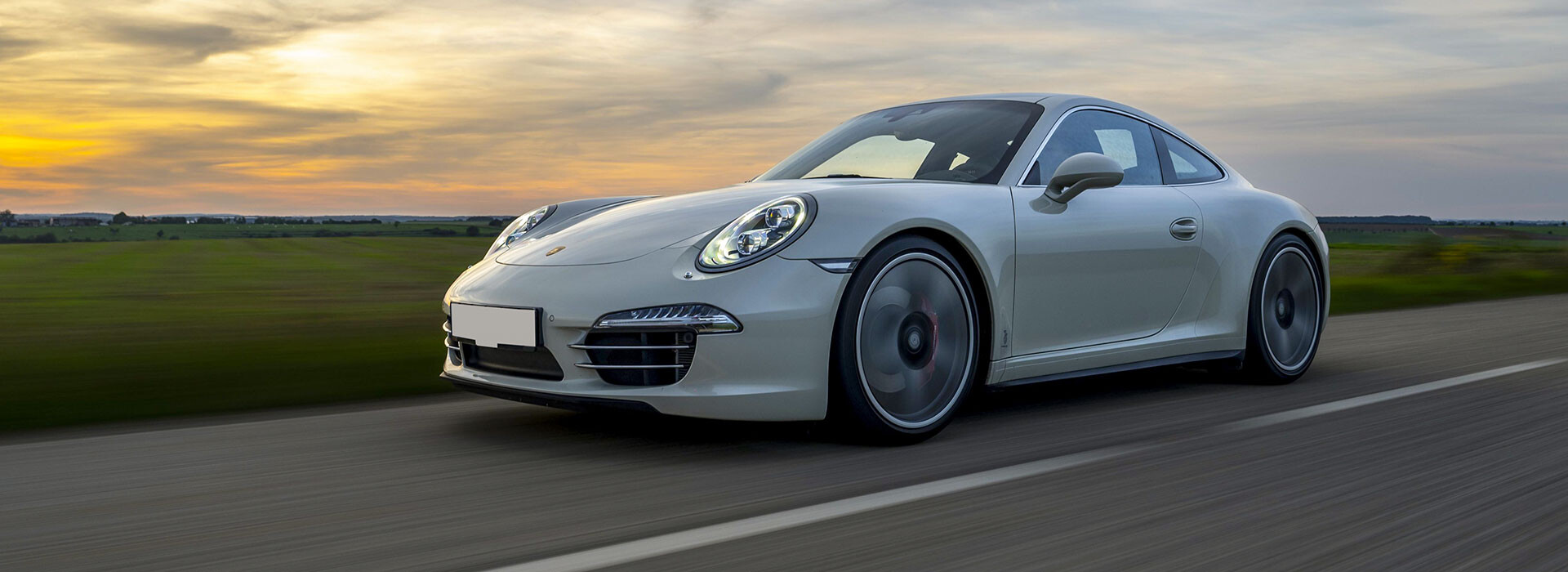Porsche 911 991 Buyers Guide 2012 – 2019
Practical Expert Advice to Help You Successfully
Buy a Porsche 911 991 2012 – 2019
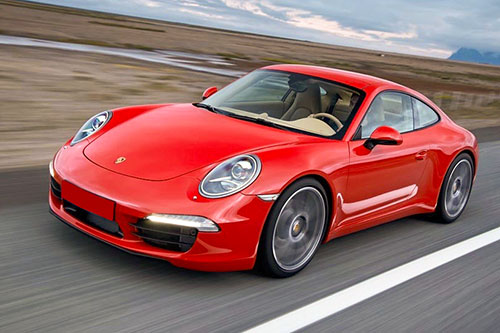 Porsche 911 991 – Last of the Best
Porsche 911 991 – Last of the Best
The Porsche 911 991 (2012 – 2019), includes the last of the normally aspirated flat 6 engine versions. The third generation of water cooled 911 models is pretty, reliable, and modern. The 991 911 is highly sought after and has held its value well in the used car market. The 991 refines the 911 platform and technically progresses it with an entirely new design layout.
Yes, You Should Buy a 991 911
Finding the perfect used 991 911 isn’t easy, but with some luck, the right knowledge, and a bit of guidance, you can land a car that checks all your boxes. Apart from a few well-documented minor issues, the 991 is a solid, highly desirable car and one that may well appreciate in value over time.
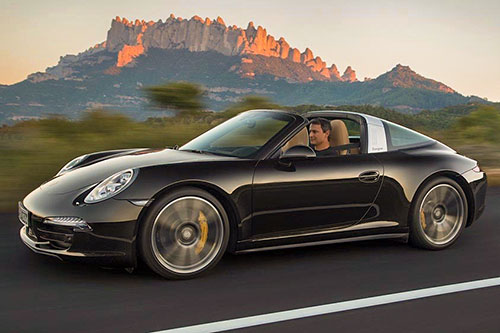 How This 991 911 Guide Can Help You
How This 991 911 Guide Can Help You
This guide will help you avoid costly mistakes and common pitfalls with a used 991 911. We skip the fluff and focus on what truly matters – mechanical concerns, known issues, realistic ownership costs, ongoing maintenance, and expert tips to help you find a worthwhile car. Armed with the right knowledge you can find an excellent lightly used 991 911.
Be Aware of What You’re Getting Into
Understanding Your 991 911 Buying Goals
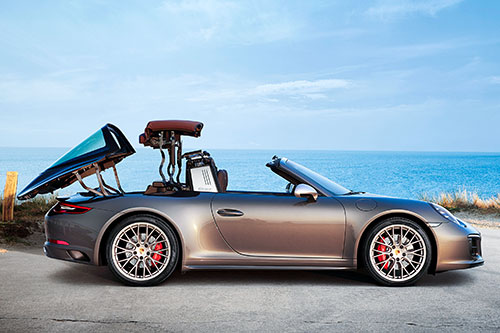 Having a good sense of why you want to own a Porsche Cayman 981 makes ownership free and easy. We think the 991 works best for:
Having a good sense of why you want to own a Porsche Cayman 981 makes ownership free and easy. We think the 991 works best for:
- Fun weekend car
- Summer daily commuter
- Occasional track car for HPDE
We don’t think it works so well for:
- Wintertime commuter car
- Low-cost sports car
- Long road trips
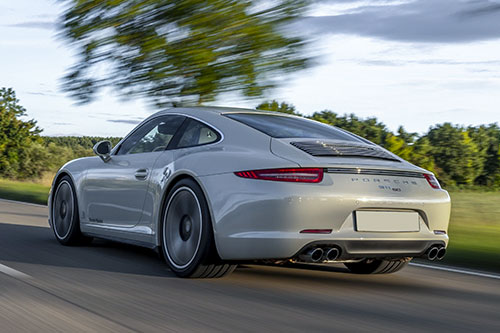 Plan For Maintenance Before You Buy a 991
Plan For Maintenance Before You Buy a 991
Like any used car, the 991 911 has a few items that you need to pay attention to. Unlike previous versions, there are no major engine issues. The most important consideration is performing consistent and accurate maintenance on the 991. Without the right maintenance service, the 991 PDK transmission for example, can become a weak point. As discussed later, PDK maintenance is critical to avoid problems – being forced to replace the PDK is north of $20K! PDK repairs for the 991 require special skills that are in short supply.
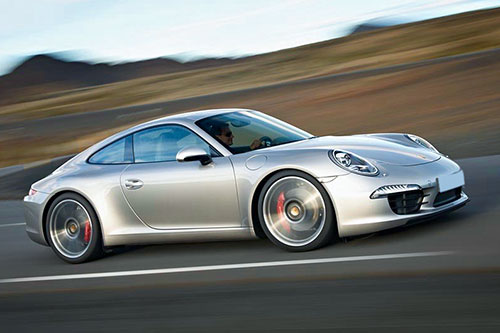 991 911 Buyers Quick Check List
991 911 Buyers Quick Check List
Before you buy any car, there are a series of questions that you need answers to. See the section “What to look for when buying” below for more detail.
- Why is the car for sale?
- Who is selling the car?
- Actual production date – sticker on driver’s door
- Mileage, maintenance, and repair history
- Number of owners
- Title status: Clean / salvage / rebuilt / other
- Accident history (check Carfax or AutoCheck)
- Service records available
- Geographic ownership history (climate matters: dry vs humid areas)
The sections below open to provide more detail. Select a topic that you want more detailed information on.
Porsche 911 991 Brief History – What We Know So far
What We Know About the 911 991 So Far
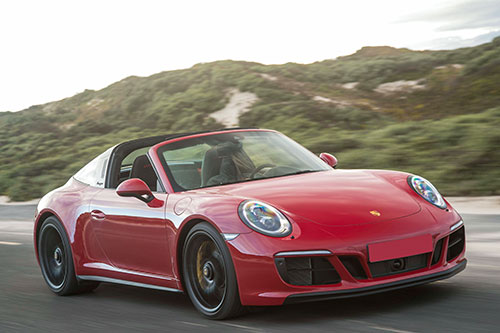 The 911 991 was launched in 2013 model year and production of the 991 generation ended in 2019 with more than 450K units produced. The 991 was the seventh generation of the 50-year development of the 911 platform but remarkably only the third time the platform had been completely revised.
The 911 991 was launched in 2013 model year and production of the 991 generation ended in 2019 with more than 450K units produced. The 991 was the seventh generation of the 50-year development of the 911 platform but remarkably only the third time the platform had been completely revised.
The 991 replaced the former 997 with sleeker looks and the appearance of being a larger car, although the actual increase in size was only approx. 56mm. The 991 introduced revised styling, better build quality, improved balance and handling, a bewildering number of model options, and overall improved drivability. A new transaxle assembly allowed the rear wheels to be moved 76 mm backward. This significantly improved the weight distribution and cornering performance.
There are two generations of the 991 – the second generation 991.2 was launched in late 2016. The second generation introduced new styling that included updated front and rear bumpers, new dual exhaust pipes, new head and tail lights, and color options. However, the biggest difference between the generations was the introduction of the new 3.0-litre twin-turbocharged flat-six engines across the entire range. At that moment everything became a 911 Turbo just not necessarily wearing the badge!
911 Carrera 991 – Two generations of Multiple Choice
There are more flavors of the 911 991 than you can shake a stick at! A bewildering number of model versions of essentially the same car with trim distinctions between them. The Carrera, for example can be a 4, S, GTS, Targa, Cabriolet, 4S Targa, 4 GTS, GTS Cabriolet etc.
First the 991.1 version – 2011 thru 2016 – one Carrera, multiple configurations:
- Engine – All models have a normally aspirated flat 6 engine. There are three versions as follows:
- 3.4L Carrera – 345HP
- 3.8L S Model – 395HP
- 3.8L GTS Model – 424HP
- Transmission – Any model can have a manual or PDK (The PDK is quicker)
- Drivetrain – Any model can be two or four wheel drive, except the Targa which is only 4wd
- Roof – Any model can be Coupe, Cabriolet, or Targa
Now you simply mix and match to find the version that suits you best!
For the second generation 991.2 – 2016 through 2019 – exactly the same logic for the Carrera variation applies, with the exception of the engines. Porsche introduced a flat 6 twin turbocharged 3.0L right across the entire model range. The turbo engine has different tuning depending on the version you pick:
- 3.0L TT – Carrera – 365HP
- 3.0L TT – S Models – 414HP
- 3.0L TT – GTS Models – 444HP
When you’re shopping for a used version of the 991 go through the details of the car to understand exactly which trim configuration is being described.
Turbo Models
The 991 Turbo was introduced in 2013 and revised to the 991.2 Turbo version in 2016. The 991 Turbo has three flavors including the S and Exclusive. The 991 Turbo was available with the PDK transmission and is a monster – topping 60mph in less than 3 seconds. The Turbo models feature rear wheel steering and adaptive aerodynamics. The Turbo is highly sought after and retains it’s value exceptionally well.
GT Models
Porsche introduced the GT3 models in 2013, subsequently adding the GT3 RS, GT3 Touring, and the GT2 RS models. The GT3 has always been a race car on the street, but with the addition of the touring version, Porsche added back some of the creature comforts and a manual transmission from the standard road cars. The GT cars initially were only offered with a PDK transmission, but in 2017 Porsche offered the second version of the 991 GT3 with a manual transmission option. The GT3 includes rear wheel steering and active aerodynamics. The GT2 RS is the most powerful and fastest 911 ever produced.
GT3 – Oops Fire!
If you are shopping for an early 991 GT3 you should be aware of a stop in production and recall of the first 785 models produced. There were two widely publicized incidents of the car catching fire which led to the recall of all 785 models initially sold and a stop in production. Once the engines had been replaced and the issue resolved production restarted. Now you’re glad to waited to buy one!
911 991.1 Improvements Versus 997
The 991.1 911 is larger, more refined, modern aggressive styling, better equipped, and offers improved handling over the previous 997 version. Most of the raw 911 Porsche feel is gone in the 991 version.
- Improved body styling with new headlights
- Increased size and chassis – more interior space
- Better interior quality and layout design
- Driver aids and electromechanical steering
- More power from revised engines
- 7 speed manual transmission options
- Better handling, balance, and brakes
- Wider and more aggressive wheel options
- Better connectivity through updated PCM
- More options
991.1 Versus 991.2 - Differences
In 2016 Porsche launched the 991.2 version of the 911. The most significant difference was a switch to all turbocharged engine platform. Other key differences included:
- Carrera engines are all turbocharged flat 6
- Engine power per model modified by tuning
- Flatter torque curve and responsive power
- Improved 7 speed manual trans
- Improved infotainment connectivity
- Improved steering feedback
- Quieter cabin and softer ride
- More driver aids
Porsche 911 991 Reputation
In general, the 991 911 series has a great reputation as a solid car that performs well everyday. The 991.1 911 is the pinnacle of the analogue Porsche design and the last of the normally aspirated flat 6 engine versions in the standard Carrera. Aggressive, yet very pretty styling, refined interior, connectivity, and improved handling matched with a touring style suspension that makes long drives comfortable and HPDE days fun.
It’s easy to fall in love with the 991 911 but before you do, make sure you are clear on what each version delivers. There are significant trim variations between the models. The choice of transmission is also a big factor. The 7 speed manual transmission in the 991.1 is cumbersome and unpopular. It was revised for the 991.2 version and significantly improved, however, the PDK performs better in all circumstances.
The 991.1 is your last go at normally aspirated flat 6 Porsche 911 Carrera. Just enough analogue feel to deliver on the raw 911 feel in your mind, combined with enough luxury and drivability to make the 911 practical for everyday use. The 991 has proven to be reliable and mechanically sound with minor repairs and issues – exceptions are the PDK transmission and the transfer case on 4wd models.
What People Like About the 991
Performance
- Chassis refinements make the 991 feel lighter and more rigid.
- Great balance with excellent high-speed stability.
- PDK transmission widely praised for speed and smooth gear changes.
- Strong, consistent, brakes with good confident feel.
Interior & Daily Usability
- Luxury feel without losing sporty flavor.
- Larger, better seats, more usable space, quieter cabin.
- Excellent interior build quality.
Sound and Driving Feel
- Less road noise
- 991.1 naturally aspirated flat-6 is all Porsche noise.
- PSE-equipped cars have great exhaust sound.
- 991.2 turbo engines have great torque and are fast.
- Turbo S is dangerously fast in the wrong hands!
What's Not to Like About the 991
Frankly, if you’ve not owned a 911 before you’ll find next to nothing to dislike about the 991 911 with the exception of the 7 speed manual transmission. If you are more of a purist, there a couple of areas that are less “Porsche brand feel” that might be evident.
- The 991 is larger and heavier than previous versions
- The electronic steering has less feedback
- The 7 speed manual transmission is cumbersome
- The turbo engine of the 991.2 lacks the old style feel and sound of the flat 6 NA engine
- 991.1 Infotainment is dated and has an awkward interface
- Interior is busy and overelaborate
- Known transfer case issues on the 4wd models
- PDK needs more maintenance than recommended
Extensive Knowledge Available For Maintenance and Repairs
The 911 991 is now more than 10 years old. The 991 has been driven, raced, broken, dissembled, and put back together again many times. As a result, independent specialists have developed extensive knowledge of these cars’ common mechanical issues and maintenance requirements. A thorough PPI and some historical research into the 991 you want to buy should reveal the details of the maintenance history. Pay special attention to the transmission service history if the car is fitted with a PDK transmission.
Acronyms and Model Options
Porsche Options and Acronyms
Porsche offers a wide range of build options that allow buyers to customize nearly every aspect of their vehicle, from performance upgrades and wheel designs to interior trims and driver-assistance systems. Options and performance technology typically attract an acronym! So, it’s easy to get lost between your PSM, PASM or PADM when shopping for a used car. In our acronym and options section we list and explain the most common acronyms you’re likely to see when shopping for a used 991.
Pricing, Market Trends - Buying Resources
Porsche 991 911 Appreciates in Value
Prices are on the rise for the 991 in general and in particular for the 991.1 GTS, Turbo, and GT3. Prices on these models have sprung up and continue to rise. The 991.1 is considered the “sweet spot” with DFI engine, better electronics, pretty bodywork, and yet retains raw Porsche feel.
Market Summary
- Manual transmission cars are at a premium across all trims.
- PDK values are strong on high-performance trims (Turbo S, GTS), but not collectible yet.
- Strong long-term investment potential for GT3, Turbo, T model, and GTS Targa.
- 991 GTS, Turbo, GT3, and RS models are appreciating quickly.
- The 991.2 Carrera S with PDK and low mileage is highly desirable for daily use.
- Cabriolets and PDK-only cars (esp. base trims with high mileage) are lagging slightly in value.
- Targa 4 and 4S models rises prices but rare cars.
The 911 991.1 Modern Classic
Looking out into the future, we can see a generation that will not know cars with internal combustion engines or manual transmissions. The joys of a loud revving exhaust will be unknown! With the change to all-electric cars, and the most recent hybrid version of the 911, the 991.1 represents the end of a 911 era. Porsche switched engine production to all turbo versions for the later 991.2 cars, so only a relatively short window of normally aspirated flat 6 water-cooled engines exist. The 991.1 is the final version of an era that started more than 50 years ago.
The 991.1 911 has a different kind of appeal – all the modern feel, safety, and quality combined with the traditions of a raw flat 6 NA engine. For those who always wanted a 911 and had the poster of an old air-cooled car on their wall as a kid, the 991.1 represents your last chance to own the traditional heritage. Likely the 991.1 will become a modern classic – one must just be patient.
How Rare are the 991 Models
Often over-looked is the relative volume of Porsche sales and the actual availability of individual models. Porsche sold approximately 450K 991 911 models globally over the production lifecycle. Once you start to delve into market and model specifics, you find some models are quite rare.
Porsche sold approximately 233K 991.1 models globally. The bulk of those cars sold were Carrera and S models. If you want a Targa 4 GTS total sales were approximately 1500! The Turbo S topped out at approximately 3000 units, and the cabriolet Turbo S at less than 1500. Surprisingly, there are more standard 991.1 Turbo models available than Carrera GTS versions by quite a margin.
So, if you find a 2016 991 911 Targa GTS, there are likely less than 2K matching cars globally. Given variations in options, colors, trim, and specifications, your 2016 model is quite rare. That must equal value in the long term for the last of the flat 6 NA 911.
For some perspective, Ford sold approximately 6.4 million F150s during the same 991 911 production period!
Pricing & Market Trends as of 2025
991.1 911 2012 – 2016
- 991.1 Carrera base – Mid $70K stable pricing
- 991.1 Carrera S model – High $70 K to low $80K stable pricing
- 991.1 GTS Model – $97K to $123K model specific – rising prices
- 991.1 Turbo / Turbo S – $103K to $122K – rising prices
- 991.1 GT3 – $140K to $150K – downward trend
991.2 911 2016 – 2019
- 991.2 Carrera – $80K to $87K – stable pricing
- 991.2 Carrera S model – High $90 K to low $100K stable pricing
- 991.2 Carrera T / GTS – $105K to $125K – rising prices
- 991.2 GT3 & RS – $190K to $200K – slight price gains
- 991.2 Turbo / Turbo S – $110K to $160K – rising prices
Sourcing Your Perfect 991 911
Most good examples of the 991 are going to end up at a Porsche sales specialist we list on our resource page. These cars will attract a premium price, might be on consignment sale, or at a quality auction site when they become available.
You might be lucky. Sometimes, you’ll find an excellent example or a diamond in the rough in an unusual spot. Nobody is going to sell a Porsche cheap, unless 1) they incorrectly perceive problems with the car or 2) there are real problems with the car or 3) they have no clue! Your job is always to be better informed than the seller.
Higher mileage early 991.1 cars can be quite a bargain compared to low mileage previous 997.2 cars.
Porsche 911 991 In Detail
Comparing the 991.1 911 Trims or Versions 2012 thru 2016
991 Carrera
- 3.4L flat 6 engine
- 350HP
- Rear wheel drive
- 7 speed manual or PDK
- Hard top or cabriolet
991 Carrera S
- 3.8L flat 6 engine
- 400 HP
- Rear wheel drive
- 7 speed manual or PDK
- Hard top or cabriolet
991 Carrera 4
- 3.4L flat 6 engine
- 350HP
- All wheel drive
- Wider body
- 7 speed manual or PDK
- Hard top or cabriolet
991 Carrera 4S
- 3.8L flat 6 engine
- 400 HP
- All wheel drive
- Wider body
- 7 speed manual or PDK
- Hard top or cabriolet
991 Carrera Targa 4
- 3.4L flat 6 engine
- 350HP
- All wheel drive
- Wider body
- 7 speed manual or PDK
- Automatic Targa top
991 Carrera Targa 4S
- 3.8L flat 6 engine
- 400 HP
- All wheel drive
- Wider body
- 7 speed manual or PDK
- Hard top or cabriolet
991 Carrera GTS
- 3.8L flat 6 engine
- 430 HP
- Rear wheel drive
- Wider body
- 7 speed manual or PDK
- Hard top or cabriolet
- All options included
991 Carrera GTS 4
- 3.8L flat 6 engine
- 430 HP
- All wheel drive
- Wider body
- 7 speed manual or PDK
- Hard top or cabriolet
- All options included
991 Carrera 50th Anniversary – 1963 produced
- Limited production
- 3.8L flat 6 engine
- 430 HP
- Rear wheel drive
- 7 speed manual or PDK
- Hard top or cabriolet
991 Turbo
- 3.8L flat 6 engine twin turbo
- 520 HP
- All wheel drive
- Wider body
- 7 speed PDK
- Hard top or cabriolet
991 Turbo S
- Upgraded 3.8L flat 6 engine twin turbo
- 560 HP
- All wheel drive
- Wider body
- 7 speed PDK
- Hard top or cabriolet
991 GT3
- 3.8L flat 6 engine
- 475 HP
- Rear wheel drive
- 7 speed PDK
991 GT3 RS
- 4.0L flat 6 engine
- 500 HP
- Rear wheel drive
- 7 speed PDK
991 R
- Limited to 991 models produced
- 4.0L flat 6 engine
- 500 HP
- Rear wheel drive
- 6 speed manual trans
Comparing the 991.2 911 Trims or Versions 2016 thru 2019
991.2 Carrera
- 3.0L flat 6 engine twin turbo
- 370HP
- Rear wheel drive
- 7 speed manual or PDK
- Hard top or cabriolet
991.2 Carrera S
- 3.0L flat 6 engine twin turbo
- 420 HP
- Rear wheel drive
- Wider body
- 7 speed manual or PDK
- Hard top or cabriolet
991.2 Carrera T – limited production
- 3.0L flat 6 engine twin turbo
- 370HP
- Lightweight build
- Rear wheel drive
- 7 speed manual or PDK
991.2 Carrera 4
- 3.0L flat 6 engine twin turbo
- 370HP
- All wheel drive
- Wider body
- 7 speed manual or PDK
- Hard top or cabriolet
991.2 Carrera 4S
- 3.0L flat 6 engine twin turbo
- 420 HP
- All wheel drive
- Wider body
- 7 speed manual or PDK
- Hard top or cabriolet
991.2 Carrera Targa 4
- 3.0L flat 6 engine twin turbo
- 370HP
- All wheel drive
- Wider body
- 7 speed manual or PDK
- Automatic Targa top
991.2 Carrera Targa 4S
- 3.0L flat 6 engine twin turbo
- 420 HP
- All wheel drive
- Wider body
- 7 speed manual or PDK
- Hard top or cabriolet
991.2 Carrera GTS
- 3.0L flat 6 engine twin turbo
- 450 HP
- Rear wheel drive
- Wider body
- 7 speed manual or PDK
- Hard top, cabriolet, or targa
- All options included
991.2 Carrera GTS 4
- 3.0L flat 6 engine twin turbo
- 450 HP
- All wheel drive
- Wider body
- 7 speed manual or PDK
- Hard top, cabriolet, or targa
- All options included
991.2 Turbo
- 3.8L flat 6 engine twin turbo
- 540 HP
- All wheel drive
- Wider body
- 7 speed PDK
- Hard top or cabriolet
991.2 Turbo S
- Upgraded 3.8L flat 6 engine twin turbo
- 580 HP
- All wheel drive
- Wider body
- 7 speed PDK
- Hard top or cabriolet
991.2 GT3
- 4.0L flat 6 engine
- 500 HP
- Rear wheel drive
- 6 speed manual or 7 speed PDK
991.2 GT3 Touring
- 4.0L flat 6 engine
- 500 HP
- Rear wheel drive
- 6 speed manual or 7 speed PDK
- No fixed rear wing
991.2 GT3 RS
- 4.0L flat 6 engine
- 510 HP
- Rear wheel drive
- 6 speed manual or 7 speed PDK
991.2 GT2 RS
- Limited to 991 models produced
- 3.8L flat 6 engine twin turbo
- 700 HP
- Rear wheel drive
- 7 speed PDK
991.2 Speedster
- 1948 units produced
- 4.0L flat 6 engine
- 510 HP
- Rear wheel drive
- 6 speed manual
- Cabriolet with hump decklid
991.1 Vs. 991.2 Key Differences
The 991.2 revision brought about some significant changes to the Carrera platform that include:
- New 3.0L flat 6 twin turbo engine
- More horse power and torque
- Quicker 0-60 mph times
- Improved economy
- Revised 7 speed manual transmission
- Rear axle steering option
- Larger brakes
- Improved Infotainment – voice input
- Revised headlights and taillights
- Active air ducting
- More driver aids – surround view camera
911 Carrera 991 Vs. Carrera 997.2 Key Differences
The 991 version of the 911 Carrera represented a significant change from the 997.2 version. The highlights in the difference are:
- Second generation DFI Engine
- Smaller engine capacity with more power
- New 7 speed manual transmission
- Larger chassis footprint – longer and wider
- Electronic steering and rear wheel steering
- Better handling and high speed stability
- More touring car feel
- Improved infotainment
- Improved interior space and quality
911 Carrera Vs. Carrera S – 991.1 Key Differences
Carrera S Model features:
- Larger capacity MA1 engine
- 50 HP more power
- Better throttle response and quicker acceleration
- 9 mph higher top speed
- 0.3 seconds quicker to 60 mph
- Larger brakes
- 20 inch wheels
- PDCC option
- PTV option
- PSE Exhaust
- Sharper feel through PASM suspension
- Upgraded interior
911 Carrera Vs. Carrera S – 991.2 Key Differences
Carrera S Model features:
- Tuned engine
- 50 HP more power
- Better throttle response and quicker acceleration
- 9 mph higher top speed
- 0.3 seconds quicker to 60 mph
- Larger brakes
- 20 inch wheels
- PDCC option
- PTV option
- PSE Exhaust
- Rear axle steering option
- Sharper feel through PASM suspension
- Upgraded interior
911 Carrera S Vs. Carrera GTS – 991 Key Differences
Carrera GTS Model features:
- Tuned engine
- More power
- Better throttle response and quicker acceleration
- Higher top speed
- Quicker to 60 mph
- Lower PASM suspension
- PDCC standard
- PTV or LSD standard
- Sport PSE Exhaust
- Sport Chrono standard
- Rear axle steering standard
- 20 inch center lock wheels
- Front lip spoiler
- Alcantara / carbon interior
991.1 Carrera Engine Vs. 991.2 Carrera Engine
The 991.1 and 991.2 911 Carrera generations marked a major shift in Porsche engine design. The 991.2 models transitioned from the MA1 naturally aspirated flat 6 engine to a new 9A2 twin-turbocharged unit. The 991.2 9A2 engine features:
- Smaller displacement 3.0L
- Twin turbochargers
- More horsepower
- More torque
- Better fuel economy
- More emission compliance
- Lower rev limit
- Easier to tune for performance
Different Models – Same Engine
991.2 Carrera models all feature the same 9A2 turbocharged engine. Porsche made changes to the engine tuning and turbo boost pressures to create differences between the models. What that should tell you is you too can tune the base model Carrera to perform in a similar, if not more powerful way, than the equivalent GTS model. Aftermarket tuners can achieve 50HP gains with the base 9A2 engine in the Carrera.
991 Turbo Model Engines
The Porsche 991 Turbo models (2013–2019) used an advanced turbocharged engine derived from Porsche’s flat-six MA1 architecture designated 9A1. The 9A1 turbo engine develops lots of power, has direct fuel injection, dry sump lubrication, larger intercoolers, and significantly upgraded internals. For the 991.2 changes were made to the tuning and intake system to boost power, throttle response, and thermal management.
9A1.70 Engine
- 3.8L twin turbo flat 6
- VTG turbo
- 560HP 911 Turbo
- 580 – 640 HP 911 Turbo S
- 553 lb-ft torque
- 7200 rpm red line
- 0 – 60 mph less than 3 seconds
- 205 mph top speed
991 GT3 Engines
The 991 GT3 models are powered by high-performance naturally aspirated flat-six engines, distinct from the turbocharged lineup. The 991.1 GT3 uses a 3.8L engine (MA1.76), while the 991.2 GT3 features a redesigned and more robust, larger 4.0L (9R1.11). Both are engineered to prioritize track performance, driver engagement, and Porsche motorsport heritage. The 991.2 was widely praised for combining traditional raw character flat 6 with improved reliability and the return of a manual transmission.
Early MA1.76 engines had known connecting rod bolt issues, and this led to a number of engine replacements under warranty.
991.1. GT3 Models – MA1.76
- 3.8L flat 6 engine
- 475 HP
- 9000 RPM red line
- Dry sump oiling
- Titanium components
991.2 GT3 Models – 9R1.11
- 4.0L flat 6 engine
- 500 HP
- 9000 RPM red line
- Improved torque curve
- Better drivability
- Dry sump oiling
- Titanium components
991 Transmission Options
Essentially the Porsche 991 generation (2012–2019) featured 3 transmission options across its Carrera, Turbo, and GT models. The Carrera models came with the choice of PDK transmission or 7 speed manual. The Turbo models all came with the PDK transmission. The 991.1 GT3 was shipped only with a PDK transmission, however, subsequently a 6 speed manual was offered as an option on the 991.2 GT3.
7-Speed Manual G97.xx series – Carrera, S, 4, GTS, Targa
- Unique among modern cars for having 7 gears.
- Revised gear ratios for 991.2 3.0L turbocharged engine.
- Lighter and more engaging than prior 6-speed manuals.
- Criticized for a notchy and cumbersome feel.
7-Speed PDK – Optional in Carrera, GTS, 4, Targa – Standard in Turbo and 991.1 GT3
- Faster than any manual in acceleration tests.
- Features adaptive shift strategies and launch control with Sport Chrono option.
- Evolved across 991.1 and 991.2 with smoother operation and better logic in manual mode.
- Revised software for GT3 and Turbo models
6-Speed Manual G97.91 – GT Models
- Smooth operation and precise gear changes.
- Lighter and more direct feel than the 7-speed version.
- Shared heritage with the Cayman GT4 product line.
- Modern analogue feel coupled with flat 6 engine.
991 911 Common Issues and Reliability Concerns
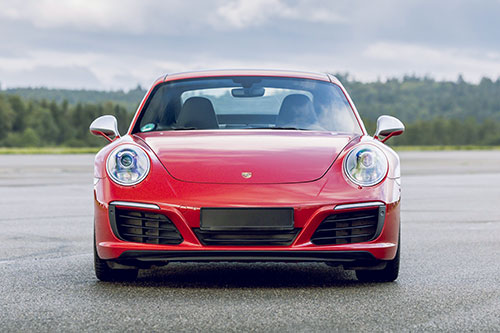 991 911 Known Mechanical Issues
991 911 Known Mechanical Issues
When considering a 991 911, don’t let the noise of mechanical issues or reliability concerns discourage you. Issues on a well maintained 991 are minor and most of the known problems are well-documented. A thorough evaluation during a PPI should reveal everything you need to know. With proper planning, any minor issues can be addressed proactively or managed throughout your ownership.
Recommended Porsche Repair Shops You Can Trust
911 991.1 - 2012 thru 2016 MA1 / 9A1 Engine Issues
High Oil Consumption
The problem of high oil consumption affected a good number of early engines in the 991.1 Typically, this resulted in the consumption of a quart of oil every 1K miles driven. In the most severe cases the engine was replaced under warranty. Low mileage versions of the early 991 may not have identified this engine issue and it’s hard to spot before you buy the car. Check the soot on the tail pipes and the average fuel consumption shown on the PCM. More soot and increased fuel consumption may be signs of oil consumption.
Carbon Build-up

The MA1 engines in the 991.1 are subject to carbon buildup around the intake valves. This causes an intake air-flow restriction and subsequent rough running at idle speed, and a loss of power during acceleration. Typically, the problem is most noticeable between 60K and 80K miles.
The good news is that removal of the carbon buildup is relatively straight forward. There are several ways this can be done from walnut shell blasting through chemical cleaning. Once completed, the runnability of the engine returns to a like new status.
Water Pump Leak and Thermostat Failure
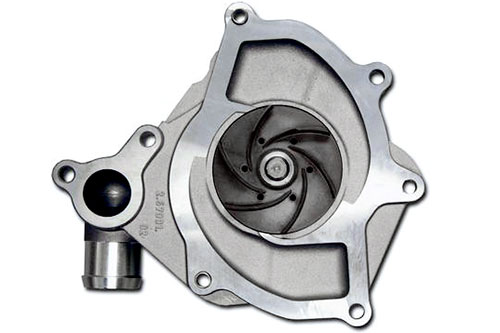 The MA1 engine in the 991.1 can have issues with the water pump and thermostat. Revised versions of the water pump and thermostat were fitted to later cars, so check to see if this work was completed in the history of the car you look to purchase.
The MA1 engine in the 991.1 can have issues with the water pump and thermostat. Revised versions of the water pump and thermostat were fitted to later cars, so check to see if this work was completed in the history of the car you look to purchase.
Water pump – the water pump on the 991.1 starts to leak before failing completely. This is an important area of the PPI to look for visible signs of a minor coolant leak. Some pumps have internal failures and will wobble while rotating. Again, this can be accessed during a thorough PPI.
Thermostat – The thermostat is electronically controlled and mapped to engine performance rather than just coolant temperature. In theory this provides better fuel economy and early response to more aggressive driving. A check engine light is normally triggered upon failure of the thermostat. Most fail in the open position and typically do not cause overheating.
High Pressure Fuel Pump Failure
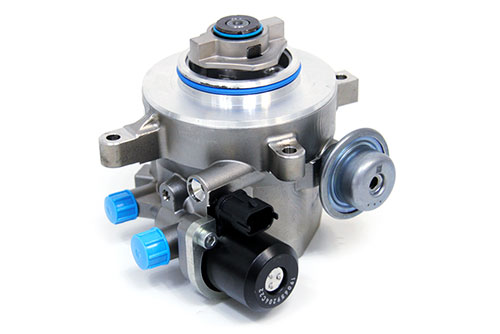 The MA1 engine in the 911 991.1 features a high-pressure fuel pump driven from a camshaft. The high-pressure fuel pump is subject to failure and typically, it initially sets a check engine light and faults associated with the fuel rail pressure.
The MA1 engine in the 911 991.1 features a high-pressure fuel pump driven from a camshaft. The high-pressure fuel pump is subject to failure and typically, it initially sets a check engine light and faults associated with the fuel rail pressure.
Typical symptoms of a failing high pressure fuel pump include:
- Delayed start of the engine or long crank time
- Hesitation or sputtering in acceleration
- Lack of power
- Higher engine temperatures
- Engine stalling and being difficult to restart
Misdiagnosed High Pressure Fuel Pump
Lack of fuel in the engine fuel rail sets faults for low fuel pressure. The obvious candidate is the high pressure fuel pump, however, the high pressure fuel pump cannot do its job if no fuel is being delivered to it. The low pressure fuel pump in the tank can also fail and cause misleading symptoms and misdiagnosis of the high pressure pump.
Coolant Pipe Connection Leaks
On the 991.1 911 MA1 engine rubber cooling hoses are clamped to an aluminum insert that sits in plastic housings. The glue fails on the aluminum insert and coolant leaks out from various connecting points. Replacement parts are updated with a screw-in insert for the rubber hose to connect to that solves this problem.
In addition, early MA1 engines had issues with the water pump inlet tube sealing rings. This typically starts as a minor and frustratingly difficult leak to identify. Often the seals will only open at higher temperatures and can easily be missed with a cold engine inspection.
Cylinder Bore Scoring
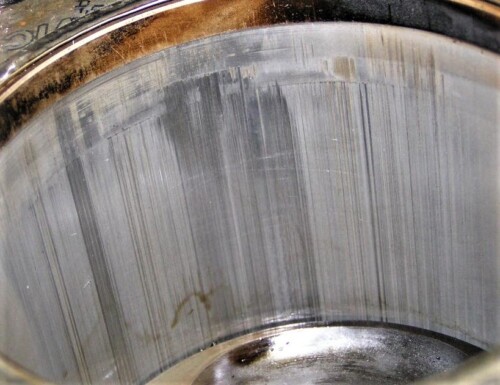 911 9971.1 MA1 Cylinder Bore Scoring
911 9971.1 MA1 Cylinder Bore Scoring
The MA1 engine can still be prone to bore scoring. Most of the bore scoring issues have been noted on the 3.8L S model engine. In particular, the commonality between the engines noted for bore scoring seems to be related to cold climates. Extreme cold engine starts appear to have a negative effect on the piston to liner clearance and can cause scoring. However, it should be noted that this is significantly more rare than on the older M97 engines.
Checking bore scoring should be completed at a thorough PPI. The least invasive way to check for cylinder scoring is to lift the car and listen from underneath with the engine running. A normal MA1 engine makes a consistent ticking sound from the valvetrain and exhaust headers.
The Noise You Don’t Want to Hear
A nasty rhythmic knock – not a tick – usually from the passenger-side cylinder bank. This knock indicates piston skirt contact with a scored cylinder wall. This is caused by wear that allows the piston to wobble at the bottom of its stroke. Left unchecked, it leads to catastrophic failure and an engine rebuild. We recommend checking this with the engine cold.
Scoring often isn’t visible without engine teardown but may be spotted using a borescope through the spark plug tube or more reliably by removing the oil pan and viewing the cylinders from below. However, during a PPI most sellers will not allow you to remove the oil pan and inspect the cylinders.
Early Signs of Cylinder Bore Scoring
One of the potential early signs for significant engine problems is a mismatch in the sooty deposits inside the exhaust tailpipes and smoke from the exhaust at cold start. These signs usually show a difference in the running efficiency of one bank of cylinders versus the other and further investigation into the cause is necessary. A 991 with one black sooty tail pipe and one clean tail pipe is not a car to buy.
Oil Pressure Relief Valve
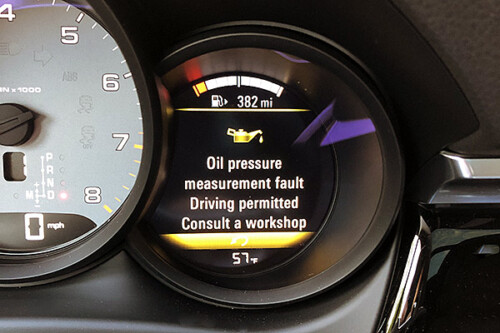 The oil pressure relief valve regulates oil pressure by diverting excess oil back to the sump once a certain pressure threshold is reached in the engine. It protects engine components from damage due to excessively high or low pressure. In some MA1 engines, the valve needs to be replaced for a number of reasons. Symptoms include leaks, fluctuating oil pressure on the dash gauge at cold start, delayed pressure buildup after cold starts, oil pressure warning light momentarily triggering, inconsistent oil pressure readings, especially when hot, and noisy valve lifters due to poor oil flow at cold start.
The oil pressure relief valve regulates oil pressure by diverting excess oil back to the sump once a certain pressure threshold is reached in the engine. It protects engine components from damage due to excessively high or low pressure. In some MA1 engines, the valve needs to be replaced for a number of reasons. Symptoms include leaks, fluctuating oil pressure on the dash gauge at cold start, delayed pressure buildup after cold starts, oil pressure warning light momentarily triggering, inconsistent oil pressure readings, especially when hot, and noisy valve lifters due to poor oil flow at cold start.
At the PPI a cold start test should carefully monitor the oil pressure performance and note any oil leaks on the oil pan.
991 Change Over Valve
Many 991 cars have had all of their Change Over Valves (COV) solenoids replaced in a Porsche maintenance campaign. Check to see if the car you are looking to purchase has completed that campaign.
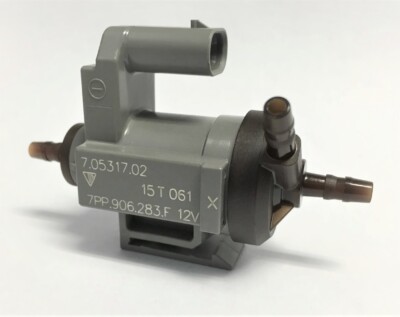 The COV device is designed to direct vacuum to effect a change, when requested to do so by an electronic control unit. For example this would include: opening a vent, changing the position of an exhaust flap, redirecting hot air from feet to screen etc. Likely systems affected on the 991 include:
The COV device is designed to direct vacuum to effect a change, when requested to do so by an electronic control unit. For example this would include: opening a vent, changing the position of an exhaust flap, redirecting hot air from feet to screen etc. Likely systems affected on the 991 include:
1. Air Cleaner Flap
2. Acoustic Simulator
3. Heater Shut-Off Valve
4. Exhaust Flaps
5. Coolant Shut-Off Valve on Engine Bypass Circuit
6. Tuning Flaps
7. Shut-Off Valve on Heat Exchanger for Gear Wheel Set Oil
8. Shut-Off Valve for Clutch Fluid Heat Exchanger (PDK ONLY)
9. Fuel Tank Vent Valve
These COV change over valves have been an issue on all the 911 cars since the 996. If you experience a failure of any system that contains a COV, it’s definitely worth checking for the correct operation from the valve before doing anything else.
PSE Faults
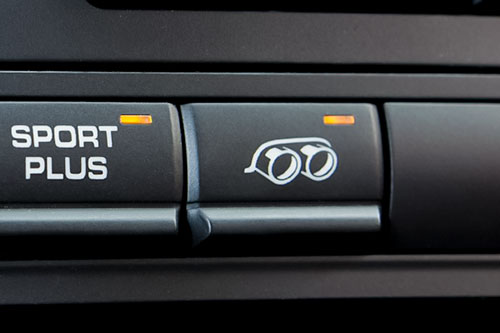 Porsche Sport Exhaust (PSE) solenoid faults are common on the 991. The faults typically indicate a malfunction of the vacuum solenoid valve that controls the opening and closing of the exhaust flap actuators. This solenoid is critical to proper PSE operation, as it regulates vacuum delivery to the muffler valves based on pressing the exhaust button or switching drive modes. If the 991 you plan to buy has the PSE fitted, check the operation thoroughly. Activating the system via the button or driving mode selection should immediately change the tone from the exhaust.
Porsche Sport Exhaust (PSE) solenoid faults are common on the 991. The faults typically indicate a malfunction of the vacuum solenoid valve that controls the opening and closing of the exhaust flap actuators. This solenoid is critical to proper PSE operation, as it regulates vacuum delivery to the muffler valves based on pressing the exhaust button or switching drive modes. If the 991 you plan to buy has the PSE fitted, check the operation thoroughly. Activating the system via the button or driving mode selection should immediately change the tone from the exhaust.
Hydraulic Belt Tensioner Failure
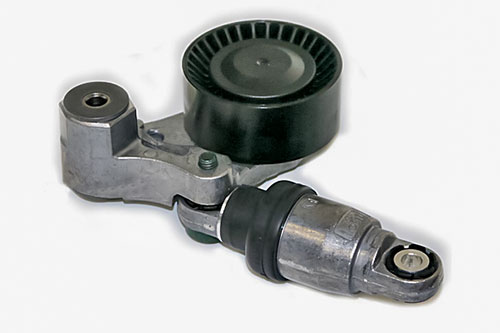 The 991 engine features a hydraulic belt tensioner that has a life span of about 60K miles or 6 years. The telltale sign of impending failure is rust on the bolt that holds the tensioner to the engine. Hydraulic fluid leaks out, the tension is lost, and the bolt head rusts. Tension on the belt is critical for driving the water pump, AC compressor etc. and a correctly tensioned belt is a critical engine component.
The 991 engine features a hydraulic belt tensioner that has a life span of about 60K miles or 6 years. The telltale sign of impending failure is rust on the bolt that holds the tensioner to the engine. Hydraulic fluid leaks out, the tension is lost, and the bolt head rusts. Tension on the belt is critical for driving the water pump, AC compressor etc. and a correctly tensioned belt is a critical engine component.
The tensioner has been update a number of times and this work should be evident in the history of the pre-owned 991 you plan to buy. If there is no history of this work plan to replace the tensioner and preempt the problem.
911 991.2 - 2016 thru 2019 MA2 Engine Issues
Rough Running and Loss of Power – Carbon Build-Up
 The MA2 engines in the 991.2 are subject to carbon buildup around the intake valves. This causes an intake air-flow restriction and subsequent rough running at idle speed, and a loss of power during acceleration. Typically, the problem is most noticeable between 60K and 80K miles.
The MA2 engines in the 991.2 are subject to carbon buildup around the intake valves. This causes an intake air-flow restriction and subsequent rough running at idle speed, and a loss of power during acceleration. Typically, the problem is most noticeable between 60K and 80K miles.
The good news is that removal of the carbon buildup is relatively straight forward. There are several ways this can be done from walnut shell blasting through chemical cleaning. Once completed, the runnability of the engine returns to a like new status.
Ignition Coil Failure
The ignition coils on the MA2 engines have been updated by Porsche multiple times. The original coils were prone to cracking and were replaced by a more substantial version. Low mileage older cars will commonly still have the older style coils and its best practice to replace them all with the newer versions, even if only a single coil has failed.
On low mileage 991.2 cars that have not been driven hard, coil problems may not show up until they are put under more unusual loading e.g. hard acceleration. That’s not easy to determine through a one-off road test or a PPI – although a runnability test on each cylinder can be done, it may not show this issue.
The good news is that coil replacement is straightforward and very common.
Turbo Rattle
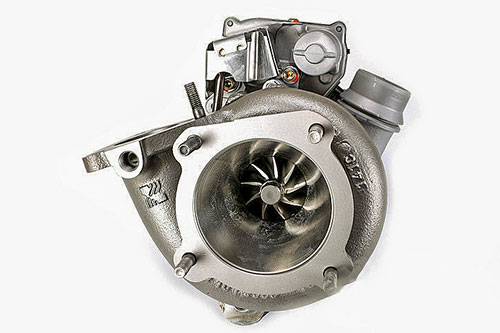 Early MA2 engines experienced issues with turbo actuation. The turbo wastegate actuator can develop excess play and movement causing a metallic rattle sound. This is usually prevalent during cold start conditions but gets worse with age. The turbo was subsequently updated to eliminate this issue and many of the units replaced under warranty.
Early MA2 engines experienced issues with turbo actuation. The turbo wastegate actuator can develop excess play and movement causing a metallic rattle sound. This is usually prevalent during cold start conditions but gets worse with age. The turbo was subsequently updated to eliminate this issue and many of the units replaced under warranty.
If you are looking to buy an early 991.2 911 with low mileage, you should have the turbo closely inspected and examine the history to see if this repair was completed under warranty. Replacing the turbo is not cheap and is likely needed on an earlier car with no history of the work being completed.
HPFP – High Pressure Fuel Pump Failure
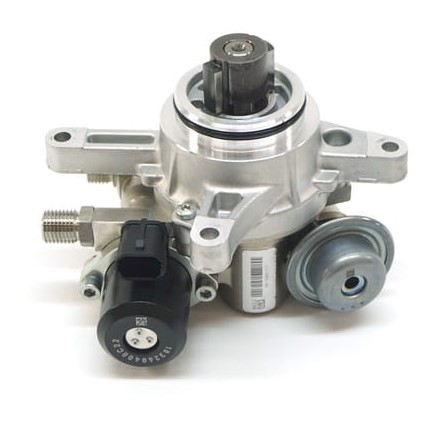 The MA2 engine in the 911 991.2 features a high-pressure fuel pump driven from a camshaft. The high-pressure fuel pump is subject to failure and typically, it initially sets a check engine light and faults associated with the fuel rail pressure.
The MA2 engine in the 911 991.2 features a high-pressure fuel pump driven from a camshaft. The high-pressure fuel pump is subject to failure and typically, it initially sets a check engine light and faults associated with the fuel rail pressure.
Typical symptoms of a failing high pressure fuel pump include:
- Delayed start of the engine or long crank time
- Hesitation or sputtering in acceleration
- Lack of power
- Higher engine temperatures
- Engine stalling and being difficult to restart
Misdiagnosed High Pressure Fuel Pump
Lack of fuel in the engine fuel rail sets faults for low fuel pressure. The obvious candidate is the high pressure fuel pump, however, the high pressure fuel pump cannot do its job if no fuel is being delivered to it. The low pressure fuel pump in the tank can also fail and cause misleading symptoms and misdiagnosis of the high pressure pump.
Coolant Leaks and Thermostat Failure
Early versions of the MA2 engine had issues with the water pump, coolant lines to the turbo, and the thermostat. Revised versions of the water pump, coolant line fittings, and thermostat were fitted to later cars, so check to see if this work was completed in the history of the 991 you look to purchase.
Water pump and valve block – the water pump on the 991.2 starts to leak before failing completely. This is an important area of the PPI to look for visible signs of a minor coolant leak. Some pumps have internal failures and will wobble while rotating. Again, this can be accessed during a thorough PPI. Porsche did extend the warranty on the water pump and valve block to 10 years for some models.
Thermostat – The thermostat is electronically controlled and mapped to engine performance rather than just coolant temperature. In theory this provides better fuel economy and early response to more aggressive driving. A check engine light is normally triggered upon failure of the thermostat. Most fail in the open position and typically do not cause over-heating. Check the 991 you want to buy to see if the thermostat has been updated – if not, expect to do this work sooner rather than later.
Turbo Coolant Lines – Coolant leaks can develop from the fittings connecting coolant supply lines to the turbo on the MA2 engine. This was quite common in the early versions and subsequent updates of the lines and fittings were made to reduce this problem. Check the history on the 991 you are looking to purchase and see if the coolant line update has been completed. On low mileage cars this may be an area that needs addressing soon.
High Oil Consumption
Modern turbo engines tend to consume more oil than their normally aspirated forerunners. The problem of unusually high oil consumption affected a number of early engines in the 991.2. Typically, this resulted in the consumption of a quart of oil every 1K miles driven. In the most severe cases, the engine was replaced under warranty. Low mileage versions of early 991.2 may not have identified this engine issue and it’s hard to spot before you buy a used version. Check the soot on the tail pipes and the average fuel consumption shown on the dash. More soot and increased fuel consumption may be signs of excessive oil consumption.
Water Ingestion Via Intercoolers
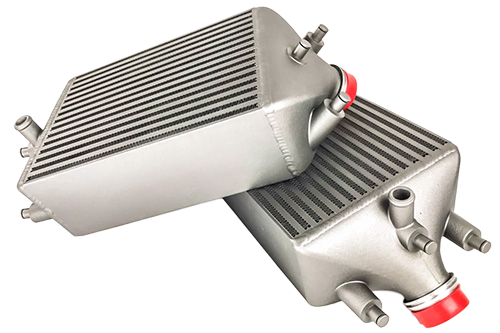 The 991.2 flat 6 MA2 engine uses a series of intercoolers to reduce intake air temperature after being pressurized by the turbo chargers. Unfortunately, in wet rainy climates or high humidity environments, this can lead to a build up of water in the intercooler system. The original drains were designed to take care of this problem but were less than effective. A redesigned intercooler drainage system resolves this problem.
The 991.2 flat 6 MA2 engine uses a series of intercoolers to reduce intake air temperature after being pressurized by the turbo chargers. Unfortunately, in wet rainy climates or high humidity environments, this can lead to a build up of water in the intercooler system. The original drains were designed to take care of this problem but were less than effective. A redesigned intercooler drainage system resolves this problem.
- Symptoms – Misfires on startup after parking in humid or rainy conditions.
- Cause – Water accumulation in intercoolers can be drawn into the engine during startup procedure.
- Fix – Updated drain systems, aftermarket drain kits, or intercooler modifications.
991 911 Transmissions – Concerns and Reliability
7 Speed Manual Transmission
The Porsche 7-speed manual transmission was introduced at the launch of the 991 generation. The design of the transmission is essentially the rear section of the 7 speed PDK. The new manual transmission suffered from a number of issues and was revised for the launch of the 991.2 version. In general, the 7 speed manual transmission received less than great reviews when compared to the PDK and that is reflected in used model value.
Porsche addressed some of the early issues with improved shifter cable alignment, an upgraded shifter housing, and a software calibration upgrade to match the Sport Chrono option. The 991.2 improved manual transmission has shorter gear shifts, revised detents for the 7th gear location, and a general better feel.
Some feedback on the 7 speed manual includes:
- Notchy feel and vague shifter position
- Difficulty engaging 7th gear
- Gear pop-out
- Excessive play and vibration on shifter
Check the 991 you plan to buy and identify if any manual transmission work has been completed.
Expected Clutch Life on 991
Clutch life varies by driver — some fail by 15K miles, others last over 100K. Signs of wear include slipping (high revs, no acceleration) and a burning smell. Judder on clutch release may indicate oil contamination from a leaking rear main seal.
A slipping clutch can quickly damage the flywheel, adding $700 in parts if replaced together — which is recommended. Check service history and expect clutch work eventually on any used manual transmission 911.
Clues to the life of the clutch can be found in the PPI based on over revs. Track use tends to shorten the life of the clutch, so checking the over-revs and understanding if the car has any track history can provide some insight into the amount of clutch life left.
991 911 PDK Transmission Concerns
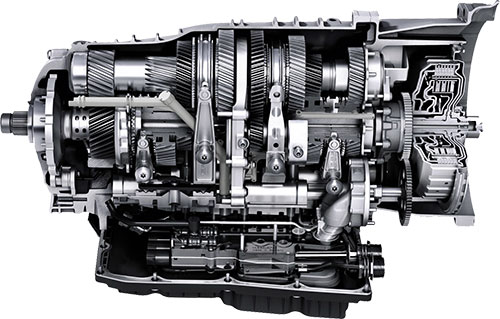 In general, the Porsche PDK transmission in the 991 is extremely reliable. However, several common issues have arisen with the PDK over time, and many have led to expensive repairs being deemed necessary.
In general, the Porsche PDK transmission in the 991 is extremely reliable. However, several common issues have arisen with the PDK over time, and many have led to expensive repairs being deemed necessary.
PDK Maintenance is Critical
The Porsche factory recommendations for maintenance of the PDK transmission have also evolved over time, with maintenance now being performed more frequently than originally recommended at the introduction of the transmission. We recommend you speed up the maintenance on your 991 PDK transmission.
The major problems with the PDK relate to a lack of timely maintenance, the unwillingness of Porsche to allow the dealership channel to take the PDK apart, and a lack of available parts! That tends to force replacement of the transmission – $20K+ and the subsequent complaints. The good news is the Porsche PDK transmission is fully repairable for a fraction of the cost of replacement.
See PDK known problems and expert PDK Repairs.
991 Cooling System Concerns
Front Radiators and Air-Conditioning Condensers
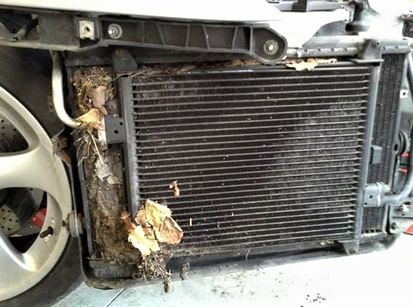 The 991 front-mounted radiators and A/C condensers sit low and exposed, making them prone to stone damage and debris buildup – especially leaves trapped around the sides.
The 991 front-mounted radiators and A/C condensers sit low and exposed, making them prone to stone damage and debris buildup – especially leaves trapped around the sides.
The ducting to the radiators and condensers should be cleaned regularly or protected with mesh screens. Thorough cleaning requires removing the front bumper – something most owners skip.
When inspecting a 991 for purchase, shine a flashlight into the front air intakes. If you see leaves or buildup, it’s a sign of neglect. Corroded or damaged radiators/condensers can’t be repaired—only replaced.
Front Coolant Pipes
Make sure during the PPI that the front coolant pipes are inspected for leaks. The coolant pipes leading from the front radiators have a series of joints from rubber to plastic and to metal in their journey from the front of the car to the engine. The joints between the pipes can leak causing coolant loss toward the front of the car – typically around the wheel wells.
Coolant Leaks
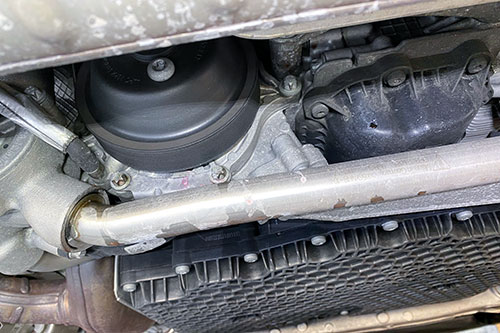 Water pump and valve block – the water pump on the 991.2 starts to leak before failing completely. This is an important area of the PPI to look for visible signs of a minor coolant leak. Some pumps have internal failures and will wobble while rotating. Again, this can be accessed during a thorough PPI. Porsche did extend the warranty on the water pump and valve block to 10 years for some models.
Water pump and valve block – the water pump on the 991.2 starts to leak before failing completely. This is an important area of the PPI to look for visible signs of a minor coolant leak. Some pumps have internal failures and will wobble while rotating. Again, this can be accessed during a thorough PPI. Porsche did extend the warranty on the water pump and valve block to 10 years for some models.
Thermostat – The thermostat is electronically controlled and mapped to engine performance rather than just coolant temperature. In theory this provides better fuel economy and early response to more aggressive driving. A check engine light is normally triggered upon failure of the thermostat. Most fail in the open position and typically do not cause over-heating. Check the 991 you want to buy to see if the thermostat has been updated – if not, expect to do this work sooner rather than later.
Turbo Coolant Lines – Coolant leaks can develop from the fittings connecting coolant supply lines to the turbo on the MA2 engine. This was quite common in the early versions and subsequent updates of the lines and fittings were made to reduce this problem. Check the history on the 991 you are looking to purchase and see if the coolant line update has been completed. On low mileage cars this may be an area that needs addressing soon.
991 911 Braking System Check Points
Checking for Brake Wear
 The brakes on the 991 are generally excellent with the S and GTS model featuring larger brakes. Brake pad material does degrade over time – check on low mileage examples to see when the last brake service was performed. The brake fluid history should show a change every few years regardless of mileage. Also, measure the amount of brake pad material remaining – you want more than 3mm. At the 3mm mark the brake pad wear sensor will trigger the replace brake pads message. This should be reported back with your PPI.
The brakes on the 991 are generally excellent with the S and GTS model featuring larger brakes. Brake pad material does degrade over time – check on low mileage examples to see when the last brake service was performed. The brake fluid history should show a change every few years regardless of mileage. Also, measure the amount of brake pad material remaining – you want more than 3mm. At the 3mm mark the brake pad wear sensor will trigger the replace brake pads message. This should be reported back with your PPI.
A complete brake service with pads, rotors and sensors can be quite expensive. So, if you’re buying from a used car vendor, look for new pads on old rotors. Both the pads and rotors should always be changed at the same time. Used car centers are famed for just replacing the pads and leaving on the old rotors. “The car has new brakes” – not if the rotors weren’t changed it doesn’t!
Worn Rotors Crack or Disintegrate Quickly
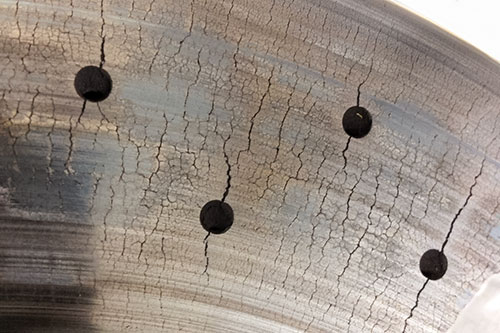 This can be particularly unpleasant when driving! The 991 has drilled rotors, so look carefully to see how clear the drill holes are and make sure there are no cracks between the drill holes. Cracks between the drill holes can lead to a much bigger crack developing and rotor failure very quickly under heavy braking. A failed brake rotor when you are trying to stop quickly is an unpleasant experience!
This can be particularly unpleasant when driving! The 991 has drilled rotors, so look carefully to see how clear the drill holes are and make sure there are no cracks between the drill holes. Cracks between the drill holes can lead to a much bigger crack developing and rotor failure very quickly under heavy braking. A failed brake rotor when you are trying to stop quickly is an unpleasant experience!
Brake Fluid Condition
Brake fluid has a limited lifetime. Low mileage cars often skip the brake fluid service, so it’s important to determine the health of the brake fluid on the 991 you plan to buy. Check the history for the last brake fluid flush in the service records. If the last brake fluid service was more than 2 years ago, we recommend you complete a brake fluid service sooner rather than later.
The brake fluid you see in the reservoir maybe be clean and look healthy. This is not a good test. What you can’t see is what matters – the fluid in the caliper at the end of the line the reservoir connects too. Despite the fluid in the reservoir being clean, the fluid in the caliper could easily be burnt and degraded.
PCCB Brake Option - Yellow Calipers
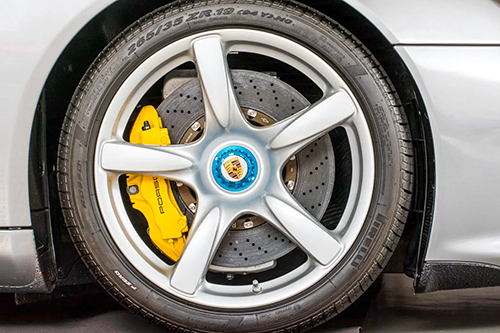 Some 991 models were fitted with the optional Ceramic Composite Brakes – usually determined by yellow calipers. During the PPI it’s important to be sure of the type of brakes fitted to the 911 you want to buy. If the car is fitted with the PCCB option and the brakes need to be replaced the cost will be between $10K and $20K.
Some 991 models were fitted with the optional Ceramic Composite Brakes – usually determined by yellow calipers. During the PPI it’s important to be sure of the type of brakes fitted to the 911 you want to buy. If the car is fitted with the PCCB option and the brakes need to be replaced the cost will be between $10K and $20K.
Upside of having PCCB brakes:
- Good weight savings
- Reduces rotational mass for better handling and ride
- Superior heat resistance
- Significantly longer lifespan – 100K miles possible
- Virtually no brake dust
The downsides of PCCB brakes:
- Very expensive replacement cost
- Not practical for frequent track use.
- Slightly less initial bite when cold – not dangerous, just noticeable
- Susceptibility to chipping or damage if not handled correctly
991 Bodywork, Suspension, and Tires
Body Water Drains
Inspect the car for water leaks, especially behind the driver seat and the drivers footwell area. Blocked roof drains can cause water to enter the cabin and damage electronic modules. Clearing drains is easy; neglecting them is costly. Check thoroughly for signs of water leaks around cabin, trunk space, and on the floor area. Make sure the drains are cleared or at least checked at every service.
Rear Spoiler
The rear spoiler on the 991 is automatically deployed based on speed but can also be manually controlled through an interior switch.
Deployment Speed
- Automatically rises at approx. 75 mph (120 km/h).
- Automatically retracts at approx. 50 mph (80 km/h).
Check the functionality of the rear spoiler. Common issues include being stuck up or down and a general failure to deploy. If there’s a malfunction, a spoiler control failure message or warning light may appear on the dashboard and “C12XXX will be set in the control module”. Spoiler failure issues can be expensive, so check the functionality thoroughly before purchase.
991 Suspension Check Points
The 991 suspension is extremely durable and should not have any issues given the age of the vehicle. However, rubber bushings and struts can be worn with age or HPDE driving. Listen for clunks or squeaks and check for fluid leaks from suspension struts. The most common issues are as follows:
Worn Control Arm Bushings
- Symptoms: Clunking noise over bumps, uneven tire wear, loose steering feel.
- Cause: Original rubber bushings degrade over time.
- Fix: Replace control arms or bushings. Many owners upgrade to polyurethane or monoball bushings for improved precision.
Failed Lower Control Arms
- Symptoms: Clunking, instability under braking, poor alignment retention.
- Fix: Replace with OEM or upgraded units
Top Mounts / Strut Mounts
- Symptoms: Squeaking, clunking over bumps, poor ride quality.
- Fix: Replace top mounts when changing struts/shocks. Consider GT3 mounts or aftermarket alternatives for improved feel.
Worn or Leaking Shocks or Struts
- Symptoms: Bouncy ride, nose dive when braking, poor cornering stability.
- Fix: Replace shocks. Many aftermarket options available.
Sway Bar End Links & Bushings
- Symptoms: Clunks or rattles during cornering.
- Fix: Replace worn end links or sway bar bushings. Consider adjustable end links if running coilovers or lowered ride height.
Alignment & Ride Height Issues
- Symptoms: Pulling to one side, excessive inner tire wear.
PASM Suspension Option
The PASM (Porsche Active Suspension Management) system on the 991 is generally reliable but can present issues that are slightly different from the standard suspension system.
PASM Shock Failure
- Bouncy or overly firm ride
- One corner feels soft or collapsed
- Fluid leaks near the dampers
- Suspension noise over bumps
Height Sensor Failure
- PASM warning light on dash
- Car rides harshly or inconsistently
- Stored diagnostic codes
Intermittent PASM malfunction messages are often caused by water ingress.
Headlights
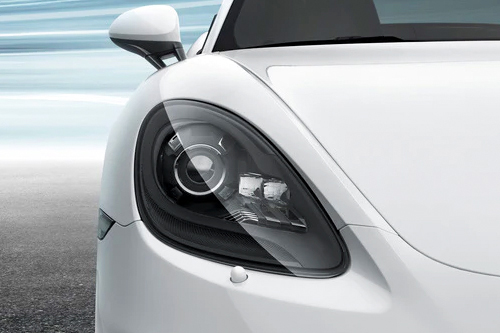 The 991 is fitted with a variety of newer style headlight depending on the individual build options and model. The option packages included daylight running lights, dynamic cornering function, and PDLS plus. Some models featured black tinting inside the headlight.
The 991 is fitted with a variety of newer style headlight depending on the individual build options and model. The option packages included daylight running lights, dynamic cornering function, and PDLS plus. Some models featured black tinting inside the headlight.
It’s important to understand which option is included with the 991 you are interested to buy. The difference between bulb replacement and headlight unit replacement is substantial. Check the headlight functionality and the condition of the lenses thoroughly. Check for condensation or cracks that could lead to condensation. Replacement of the headlight unit is expensive, with the enhanced lighting package option typically more than $2K per light unit. Control modules for the headlights may also require additional coding if replaced.
Rear Tire Wear and Age
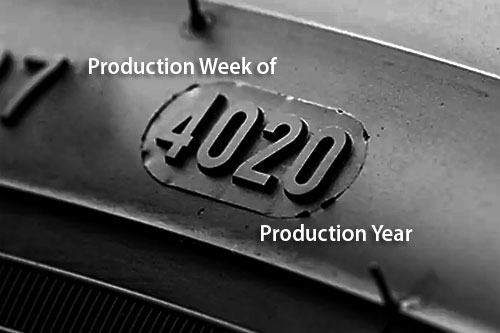 Uneven tire wear, especially on the inner rear shoulders, often points to worn rear control arms, poor toe setting, aggressive camber settings, and general poor alignment. Rear tires are expensive and an alignment issue will quickly degrade the tire. This should be revealed in the PPI.
Uneven tire wear, especially on the inner rear shoulders, often points to worn rear control arms, poor toe setting, aggressive camber settings, and general poor alignment. Rear tires are expensive and an alignment issue will quickly degrade the tire. This should be revealed in the PPI.
Check tire DOT dates — anything over 5 years old should be replaced, even if tread looks good. Low-mileage cars often have old, degraded tires that can fail despite the minimal wear level. With a used 991 and low mileage, you will likely need new tires because of their age rather than because they are worn. Knowing the DOT date allows you to plan for when the tires will need to be replaced.
Rattle or Squeak From Dashboard
 Many 991 customers have encountered a rattle or squeak noise that seems to be coming from the steering column, instrument cluster or forward console area. Porsche issued a TSB for its workshops that identifies a potential issue related to the fuel tank.
Many 991 customers have encountered a rattle or squeak noise that seems to be coming from the steering column, instrument cluster or forward console area. Porsche issued a TSB for its workshops that identifies a potential issue related to the fuel tank.
There are foam insulating pads that sit between the fuel tank and the bodywork that allow some movement of the fuel tank but cushion the sound of the tank hitting the body. Over time, these pads have either worn out or moved due to a lack of adhesive. The result is a strange rattle or squeak noise from the front of the 991 that appears at first to be coming from the dashboard.
Revised foam pads are available to solve this problem. In some cases, replacement of the pads can be achieved without removing the fuel tank. However, for many removal of the fuel tank and replacement of the pads is necessary.
High Level Brake Light
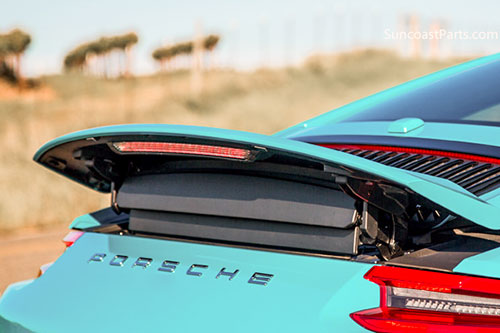 Check High Level Brake Light Message in Driver Display
Check High Level Brake Light Message in Driver Display
The Porsche 911 991 models often have an issue with the high level brake light in the rear spoiler. Frustratingly, this message can come and go seemingly at will. Typically you’ll see this message at higher speeds and then when you come to a stop and inspect the brake light it seems to be working and the dash message goes away.
Many owners have rushed out and replaced the brake light only to discover the problem remains after replacement. So, proceed with caution before diving into your wallet and thoroughly check the functionality of the brake light in the 991 you plan to buy. Repair history may well show replacement of the third brake light and if not it’s probably best to plan for the repair.
Typically, loss of function of the third brake light is down to a broken wiring harness. See 911 common problems for more detail.
991 911 Maintenance, Running Costs, Spare Parts, Repairs
991 Maintenance Service Schedule
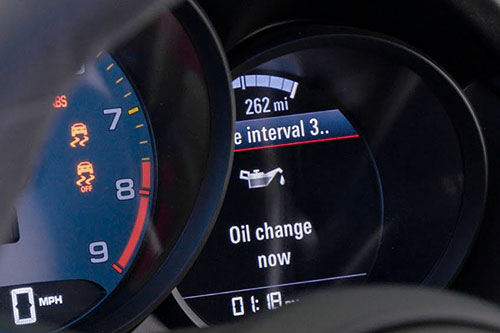 Maintenance Service Dash Messages
Maintenance Service Dash Messages
The Porsche 991 will display a variety of maintenance-related messages on the dash to remind you of service intervals. These appear in the central multifunction display and can vary depending on model year and the PCM (Porsche Communication Management). Check the PCM in the car you want to buy and scroll through the remaining time and mileage in the maintenance area. The guide should indicate the time to the next service and what type of service is due. There is a significant difference between the cost of an annual service and a major service interval every four years. Understanding what service is due next, what’s included in that service, and the cost of the maintenance interval, can help you plan for your ongoing ownership cost.
Get a More Personable Relationship with a Porsche Repair Shop
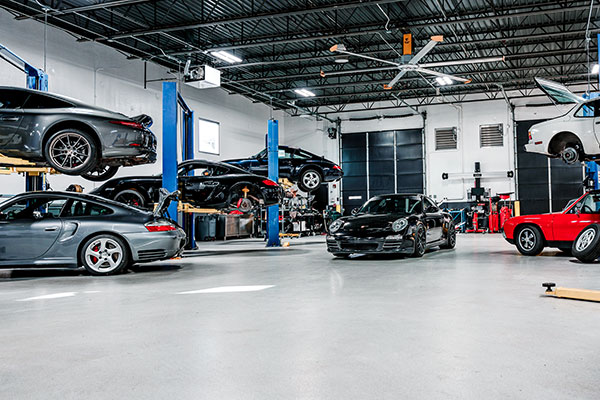 Many dealerships are limiting service to newer vehicles, often turning away Porsche models over 10 years old due to a lack of technicians trained in older cars and an increasing focus on EV cars.
Many dealerships are limiting service to newer vehicles, often turning away Porsche models over 10 years old due to a lack of technicians trained in older cars and an increasing focus on EV cars.
In contrast, independent shops usually have decades of experience, offer a more personalized service, and often allow customers to see and understand the work being done on their car first-hand. We recommend you use a local recommended Porsche repair shop for your 991. Expert Porsche shops can save you 20% on 911 maintenance compared to dealer service.
991 911 Running Costs
Create a maintenance plan based on inspections and the advice from a repair shop. We recommend you budget $110 a month for routine maintenance service, covering annual, intermediate, and major maintenance over four years. Plan extra for new tires and brakes based on mileage and condition.
Additional costs include repairs, insurance, and taxes. Repair costs can vary dramatically depending upon the issue that needs to be resolved, and typically work on the 991 is difficult and attracts more labor time. We suggest budgeting $80 per month to cover likely repairs over a four year period.
PDK Transmission Maintenance
PDK Maintenance is Critical
The Porsche factory recommendations for maintenance of the PDK transmission have evolved over time, with maintenance now being performed more frequently than originally recommended at the introduction of the transmission. We recommend you speed up the maintenance on your 991 PDK transmission.
Most of the major problems with the PDK relate to a lack of timely maintenance, the unwillingness of Porsche to allow the dealership channel to take the PDK apart, and a lack of available parts! That tends to force replacement of the transmission – $20K+ and the subsequent complaints. The good news is the Porsche PDK transmission is fully repairable for a fraction of the cost of replacement and timely maintenance improves the PDK reliability.
See PDK known problems and expert PDK Repairs.
991 Parts Availability
The parts availability for the Porsche 991 911 is excellent. Many original parts were revised and reused on the later chassis and there are many commonalities between the 991 and later 992 models. Many components are still in production or at least readily available through after-market suppliers. Parts that are harder to find include interior trim components, cabriolet motors and sensors, headlights, and infotainment system replacements. In most instances we recommend using Porsche factory parts.
The Buying Process
What to Look for When Buying a 991 911
Pre-Purchase Inspection (PPI)
Once you’ve found a potential 991, your first step should be a thorough inspection by a Porsche specialist. A pre-purchase inspection (PPI) can uncover hidden mechanical issues that aren’t obvious at a glance. It’s important to use a competent and experienced shop to perform the PPI. Providing the shop with any known repair or maintenance history on the car will help them with a detailed assessment.
Feedback From a Pre-Purchase Inspection
The inspection should uncover the details of the mechanical wear on the 911 and the general condition. What you also want to know from the report is what’s next. Before making the purchase, you want to know the extent of maintenance work needed on the car in the next few years. Use our maintenance guide for the 991 to map the history to your next maintenance steps. You also want to know the age and health of the battery and the DOT on the tires.
Fault Codes and Over-Revs
The PPI Should Check Fault Codes and Emissions Readiness
Before buying any car, it’s crucial to check when the OBD fault codes were last cleared and to verify the emissions monitor status. A seller can easily clear codes just before your test drive, which also resets the emissions monitors to “not ready.”
Since emissions tests require multiple drive cycles, hidden issues may not reappear for many miles. During a PPI the shop should confirm that the emissions system shows “ready” – this indicates the car has been driven enough since the last reset and isn’t hiding recent faults.
How Hard Has the Car Been Driven – Over-Revs
Revving an engine to the red line is safe and even healthy for the 991 engines when done correctly. A proper gear change at redline may briefly raise RPM slightly—this is normal and harmless. However, selecting the wrong gear (like downshifting instead of upshifting) can cause the engine to over-rev way beyond the red line. This common mistake, known as a miss-shift, has led to catastrophic engine failures in many Porsches.
Recorded Events
Fortunately, Porsche’s engine management system logs key data, including engine over-rev events. The ECU permanently records engine hours and when these events occurred.
There are six over-rev levels, from minor redline hits to extreme, potentially engine-damaging RPM spikes. Lower-level events often just show spirited driving, but higher-level over-revs may indicate serious stress and events that could shorten the engine life. During a PPI you want to know what over-rev details are recorded in the ECU.
Track Use, HPDE & Over-Rev Insight
Many Porsche owners enjoy track days, where gear changes often occur near redline. These can trigger entries in the lower over-rev ranges, which are logged by the ECU. Multiple entries in these lower levels may suggest frequent track use, offering insight into how hard the car has been driven—and how well it may have been cared for over time. Discuss and take the opinion of a specialist Porsche shop based on the over-rev detail stored in the car you want to purchase.
Check for Completed Recalls
Specific models and production ranges of those models can require repairs under manufacturer recalls. It’s worth checking to make sure that the pre-owned Porsche you plan to buy is up to date with the recalls required on the specific model. You can do this most effectively with:
National Highway Traffic Safety Administration
or directly with Porsche:
Why Is the Car for Sale?
There are often very genuine reasons why a car is for sale. We all move on, however, older cars are often put up for sale when mechanical issues are deemed too expensive. Did deep and if possible, understand why the car is for sale.
Who Is Selling the Car?
If you’re buying from a used car dealer, find out where they sourced the 991. A Porsche-focused dealer is a good sign. But if the dealer typically sells budget minivans, proceed with caution. Who trades in a Porsche at a used car lot that doesn’t specialize in them? Often, it’s someone offloading a car with hidden issues, betting the dealer won’t notice. Do your homework.
Actual Production Date – Sticker On Driver’s Door
Most cars are advertised using the model year or registration year. This can be misleading. The production year runs August through July. That means cars produced in August through December are described as the following year’s production e.g. September 2001 production is often called a 2002 model year car.
Why Does This Matter?
The simple answer is parts, recalls, and updates. The actual production date is critical to understand the likely components fitted on the car. In the 991 case, the change in engines, and campaigns such as the change over valve repairs for example, happened in a specific production window. Knowing the actual production date for the 991 you plan to buy can help you determine the real value of the car and the potential for issues.
Mileage Covered
10K miles per year is considered good condition for most cars. However, most 991 cars do not do 10K miles per year. Typically, they will have covered more mileage in their first few years of age and then progressively slowed down in mileage per year subsequently. What’s important to discover is how the maintenance for the 991 changed over the mileage covered and its frequency – that will likely tell you more about the health of the car versus the total mileage covered. Pay particular attention to the maintenance history on the PDK transmission. Service work on the PDK is critical.
What Type of Mileage
High speed freeway driving versus around town local driving can have a serious influence on the overall engine and transmission condition. Long drives at higher speeds tend to produce less wear as opposed to lots of cold starts and short journeys. Look at the location of the owners and make a judgement based on the mileage recorded over the time the owner used the car.
Low Mileage Garage Queen – Not So Fast!
While low mileage on a 991 is very appealing, it can come with its own set of issues. Infrequent use often means missed service intervals, leading to age-related wear in fluids, seals, tires, brakes, and clutch components. Lack of maintenance based on time is risky. For example, spark plugs should be replaced every 10 years, regardless of mileage, and brake fluid flushed every 2–3 years. Tires too may have good remaining tread but can still be unsafe if over 5 years old.
Low-mileage cars often demand a premium but be sure to budget for catch-up maintenance after your purchase. Pay particular attention to the PDK maintenance performed. Low mileage cars with no history of PDK transmission service are a prime candidate for PDK problems in the future.
Number of Owners
For most Porsche cars, the number of previous owners matters less than the car’s maintenance history and overall condition. What really matters is how long each owner had the car and how well they took care of it. If you see an increasing number of owners over a decreasing amount of time, that may well be a sign of neglect.
Title status, Accident History
There are several good ways to check the title status on a vehicle available. All you need is the vin number.
- National Motor Vehicle Title Information System (NMVTIS) – Government-backed, very reliable
- Carfax – Detailed history reports
- AutoCheck – Similar to Carfax
- VINCheck (NICB) – Free check for theft/salvage
Geographic Ownership History
Understanding where the car has been in the country can give you some clues as to its history of use. Cars in the south are likely to have been driven regularly as the weather does not preclude the enjoyment of the 991. However, cars in northern states are often stored during the wintertime and experience a good number of months without being driven. Climate too can be a factor. Hot and dry versus high humidity has different effects on the health of rubber components and interior trim for example.
Porsche 991 911 Years to Avoid
This is a common question and not one that is easily answered. All 991 model year production has some potential for issues that you should pay close attention to. The earlier production 991 cars with the flat 6 NA engine are significantly more desirable and as a result more expensive. There really isn’t a production year to avoid at all. Perhaps the only real question marks are associated with the PDK and manual transmission. In the case of the PDK maintenance is critical. In the case of the manual transmission, it’s more about the feel and practicality of driving the 7 speed. There’s not much to not like about any 991 911!
Buying Out of State or From Distance
As luck would have it, the Porsche you really want is on the other side of the country! This used to be an issue, but these days buying cars out of state is commonplace. There are technology based tools to enable a smooth transaction and help minimize the risks, and excellent ways to transport you car home.
Tips for Buying a Porsche Out of State
- Start with a thorough online evaluation
- Get detailed photos: exterior, interior, engine bay, undercarriage, and tires.
- Request a walkaround or live video call (FaceTime or Zoom) to confirm condition.
- Run a VIN check
- Use Carfax, AutoCheck, or VinAudit to check for accidents, title issues, maintenance history etc.
- Get an option list or build sheet using a vin decoder
- Use an escrow service for the transaction
- Insure the car before transport to you
Transporting the Car – Recommended Car Carriers
Some buyers like to fly in, put their hands on the car, complete the transaction and drive home. In many cases this is not practical, and so buyers turn to shipping companies to transport their new purchase directly to their home. If you’re buying from a Porsche sales specialist, they will likely have an option and can recommend a car shipping company they typically work with. Here are some shipping companies that we have worked with that offer excellent service:
Find a Local Porsche Repair Shop For Support
Recommended Porsche Repair Shops You Can Trust
Ownership and Driving Experience
What to Expect and How to Personalize Your 991 911
What it's Like to Live With a 991 911
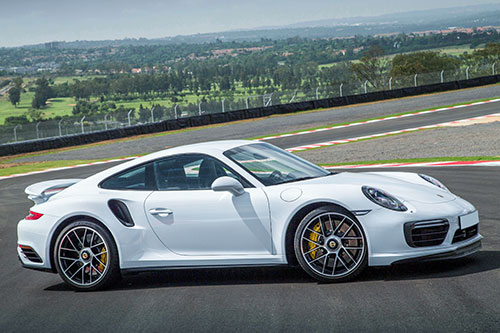 All versions of the 991 are easy to drive, park, and have fun in. The ride quality and handling improved significantly over the previous 997 and options like PASM or PDCC adapt the ride to your circumstances. The 991 is raw fun to drive on twisty roads but refined enough for a comfortable long drive.
All versions of the 991 are easy to drive, park, and have fun in. The ride quality and handling improved significantly over the previous 997 and options like PASM or PDCC adapt the ride to your circumstances. The 991 is raw fun to drive on twisty roads but refined enough for a comfortable long drive.
Living with a 991 911 is about enjoying a near-perfect balance between usability and excitement. It’s refined enough to daily drive, quick enough to thrill on track, and timeless enough to keep as a long-term investment. The 991.1 marks the end of the traditional naturally aspirated 911 Carrera models. That makes it a sweet spot for many enthusiasts and models have retained their value well, with some models like the GTS starting to appreciate in value.
991 Everyday Usability
- Comfort – The 991 is surprisingly comfortable for daily use and more like a GT style car than ever before. With PASM (standard on most models), it rides well even over broken pavement and is quite forgiving.
- Interior – Modern, minimalist, and high-quality. The center console cockpit style layout is inherited from the Panamera, and feels more upscale than earlier 911 models.
- Space – The 991 feels roomier than the previous models, however, the front trunk is only usable for a carry-on size bag and maybe groceries. Rear seats are fine for small children or very occasional use, but realistically they’re only another storage area.
- Infotainment – The PCM offers good connectivity but you need to check your phone model will actually talk to the 991.1 – software updates for the PCM can help and there is an option to update the complete system. 991.2 models have better connectivity and Apple CarPlay.
Performance & Driving Feel
- Driver Interaction – The 991 has a wider track and longer wheelbase than previous 911 models, offering a more stable, planted feel that is more like a grand-tourer. It still feels like a 911 and can get tail happy if you try hard. The 991 is more mature and sophisticated with the only handling feedback negative being associated with the electronic steering – sometimes described as numb at the center point.
- Manual vs. PDK – The 7-speed manual transmission can be cumbersome. We encourage you to try the PDK before opting for the manual transmission. The PDK transmission is fast, intuitive, and arguably now better than a manual.
- Noise – The 991.1 models with the naturally aspirated flat 6 engine produce perfect Porsche sound. Coupled with a PSE – Porsche Sport Exhaust or aftermarket exhaust, the 991.1 produces a fabulous sound track. The 991.2 models using the twin-turbo flat-six engine are less raw but do produce more power and better fuel efficiency.
Save 20% - Efficient Maintenance Service
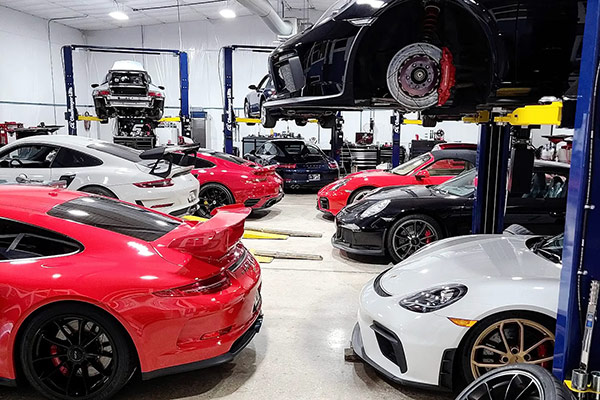 911 991 Recommended Maintenance Intervals
911 991 Recommended Maintenance Intervals
Maintenance on the 991 is due annually, with an intermediate service at 2 years or 20K miles, and a major service at 4 years or 40K miles.
PDK Transmission Maintenance
If the 991 you plan to buy is fitted with a PDK transmission, we highly recommend performing maintenance on the PDK sooner than the factory recommendations. PDK maintenance is now recommended at 40K miles or 4 years to prevent expensive PDK problems.
Recommended Porsche Repair Shops
Save 20% on Maintenance Service and Repairs
Interior Expectations and Infotainment
 Interior
Interior
The 991 interior features a raised center console that delivers a cockpit style feel. Different models vary in the interior materials used, but expect to find more refinement and use of aluminum and leather. The dash features the classic style 3 round pods and the steering wheel has the multifunction layout. The standard seats are comfortable while being sporty enough – optional sport seats were fitted to some models for better bolstering.
Infotainment
The 991 features the PCM 3 system with touchscreen interface. Check the functionality of this thoroughly in the 911 you plan to buy as early versions had several issues. Check the software revision level during a PPI. The most common speaker system added is Bose. The PCM features navigation, Bluetooth audio and phone connectivity, typically a CD drive, and a single USB or Aux port connectivity.
Check the Bluetooth connectivity – on earlier versions, while you can connect, you may not be able to stream music to the PCM. No Apple CarPlay until the 991.2 version and PCM 4.0 – you may have to talk to your partner on longer journeys with the 991.1!
Tire Management
The 991 uses Porsche N rated tires. If the car you buy has 19 or 20 inch rims, you’ll be looking at more than $1500 for a set of 4 tires. The rear tires will wear more quickly than the fronts on the 991 due to the suspension setup. It’s important to stay on top of vehicle alignment – any loss of alignment on the rear of the 911 will eat the inner shoulder of the rear tires rapidly. This is difficult to see because it’s so far under the car but check it regularly or you’ll be buying rear tires way more often than you expect. Tire choice is also critical because it can effect the quality of the feedback from the electronic steering.
If the 991 is fitted with ADAS forward facing cameras then vehicle alignment is more complex and expensive. The number of shops that provide ADAS based alignment is low but growing. If you need an ADAS alignment, check that the shop offers an ADAS based alignment system.
HPDE – Track Days
If your ownership plans include heading out for a track day (HPDE), then the 991 can be a lot of fun. On track, the car is easy to drive quickly, safely, and well balanced.
Your 991 was designed to deliver exceptional performance in fast, dynamic environments such as the Nürburgring. It’s simply not safe to drive fast on the streets – so to learn the art and experience the thrill of safe higher speeds, there are many well organized track day events designed for just such a purpose.
Track day events are not racing, nor are they preparation for racing. No times or placings are recorded, and no awards or prizes are received by the participants. Track days are just a lot of fun, thrills and camaraderie. You will be a safer, slower 991 driver on the street, after you learn how to drive fast on the track!
Upgrades and Modifications
There are several manufacturers that support the 991 for upgrades such as wheels, exhaust, intake systems, suspension, etc. In addition, many of the body panels, spoilers or bumper assemblies from different model versions are interchangeable with different models. The 991 definitely benefits from an exhaust upgrade if no PSE option was fitted – more sound from the flat 6 ICE is always a good thing. For the 991.2 turbo engines, aftermarket ECU tunes are available to bump the horse power from a standard base Carrera to the levels above that of the GTS models.
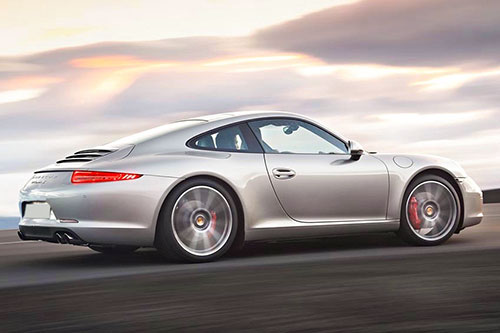 The Porsche Cayman 981 We Would Buy
The Porsche Cayman 981 We Would Buy
The 991 is a great choice for practical everyday Porsche motoring and is comfortable enough for road trips with the improved suspension. The 991 can be a practical commute to the office and is ok for one passenger. We think you can use the 991 everyday unless it rains – being stuck behind large SUVs and pickup trucks in the rain is not fun and gets worse if it is dark.
The most desirable practical 991 cars (outside of a Turbo S or GT3) are the GTS models with the tuned MA1 engine and PDK transmission. These cars top the HP range of the Carrera and are sporty and yet refined at the same time. GTS models are harder to find and command a premium price. You should be aware of the potential for expensive PDK issues with any 991 unless maintenance has been timely.
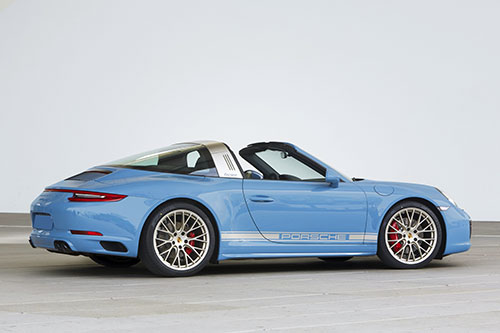 991.1 GTS Targa With Options is Our Pick
991.1 GTS Targa With Options is Our Pick
The early 991 is holding it’s value so, finding a lower mileage Carrera with good service history is probably the best buy. Our pick would be a 991.1 GTS Targa with all the options fitted. The Targa is unique – heritage based roof, wide and aggressive with a tuned normally aspirated flat 6. The Targa is a keeper – you wont ever see that kind of 911 built again.
No matter the model you choose, the Porsche 991 911 is widely regarded as one of the finest versions of the 911 Porsche has built – we think it’s the best. All models offer a great balance between, performance, everyday usability, exceptional handling, and the unmistakable Porsche flat 6 ICE soundtrack. All models have good interior quality, sharper styling than their predecessor, and stronger reliability.
 Manual Transmission Versus PDK
Manual Transmission Versus PDK
As diehard sports car fans, the three pedal manual transmission option typically would be the favorite. However, we recommend you drive both transmissions before you make a final decision. In manual mode, the PDK has everything you want from a manual transmission without the third pedal. You can choose to be lazy and let the PDK do the gear changing if you prefer – likely you’ll be surprised as to how well it handles that role! The 7 speed manual for us is cumbersome.
- Best bargain – 2012 low mileage 991 Base Carrera PDK
- Best long-term value model – 2016 low mileage 991.1 GTS PDK
- Most collectable – 991 GT3 RS or GT2 RS
- Best driver and HPDE – 991.2 low mileage GTS Model PDK
- Bonkers Performance – 991.2 Turbo S with ECU tune
